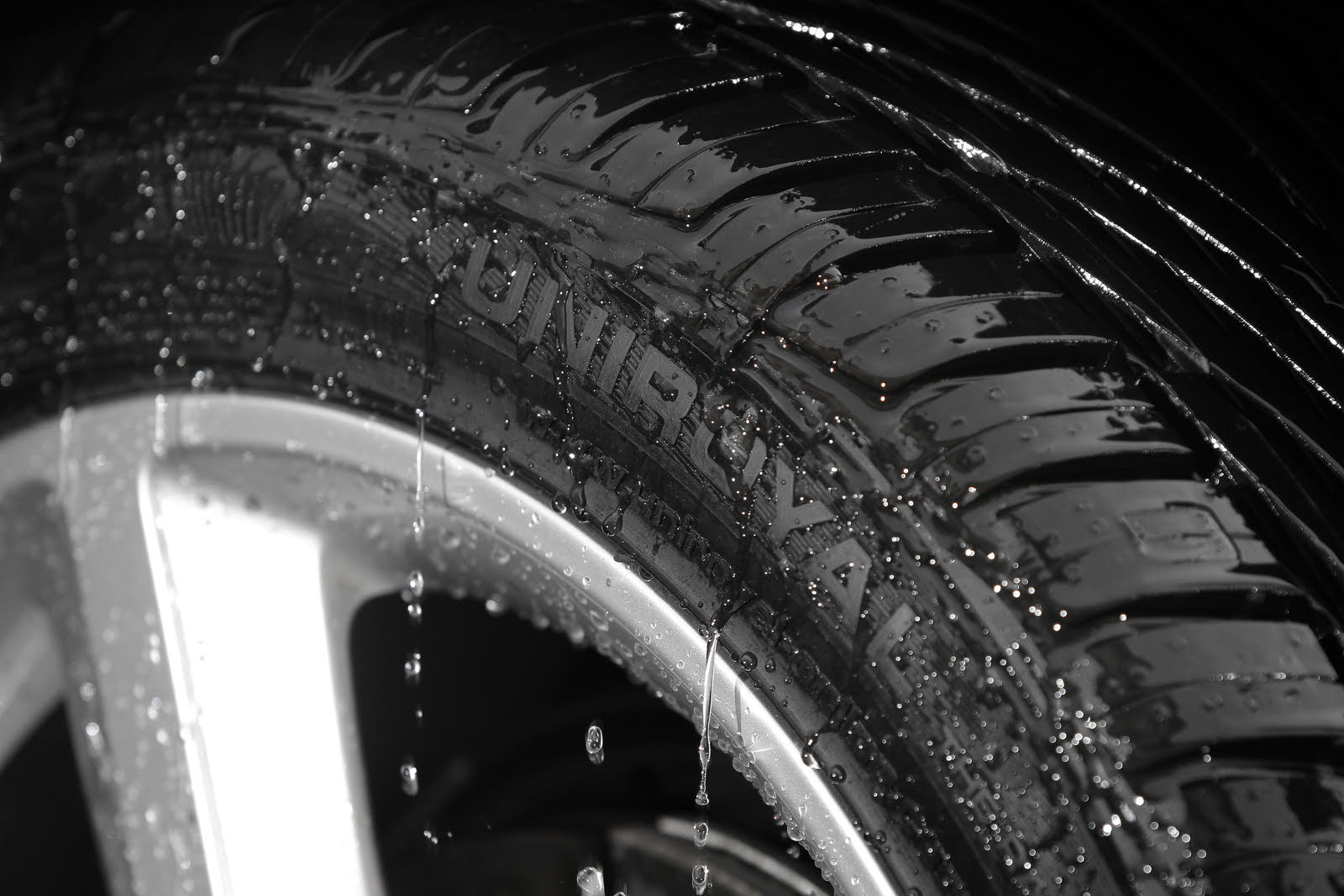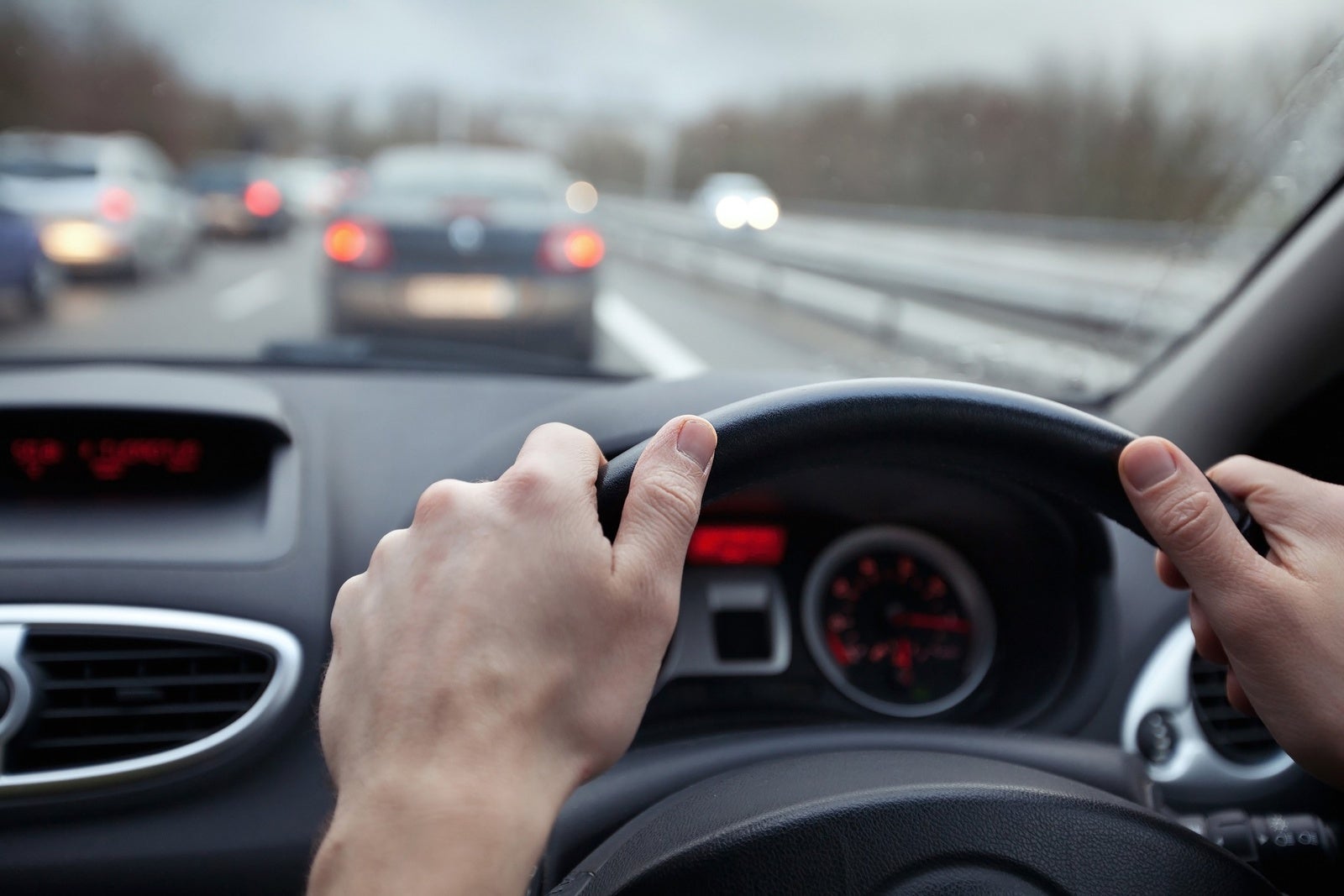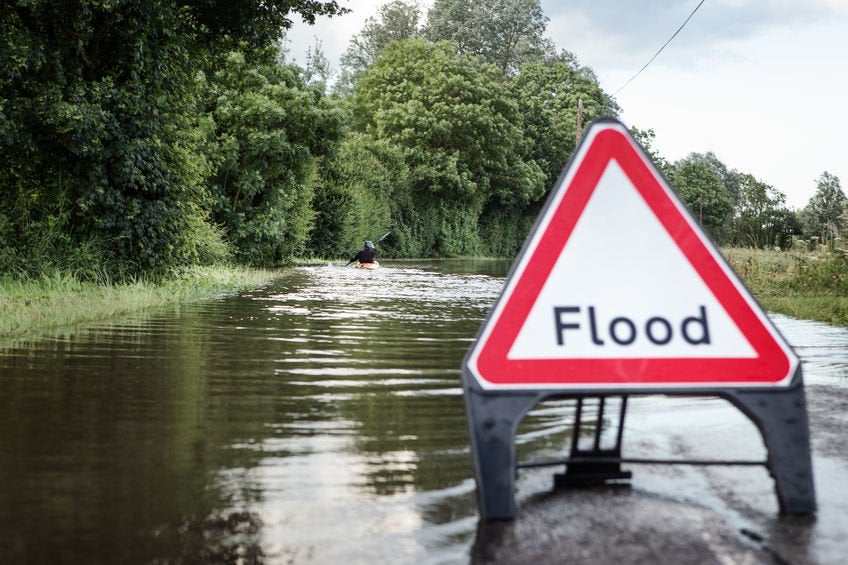Living in the UK you’re no doubt used to driving in rainy weather conditions. However, as with so many elements of car ownership, it can be all too easy to forget best practice once you’ve passed the test, which is why we’ve put together these top tips.

Prepare Your Car
Much of driving safely in the rain comes down to having a well-prepared car in roadworthy condition. In particular, because the channels in your tyre’s tread disperse excess water, the tread depth on your car’s tyres should be well over the legal limit of 1.6mm (you can check with a dedicated gauge or even the edge of a 20p coin). This is very important, because if you hit deep water with tyres that can't cut through it, you'll aquaplane and could lose control.
Headlights are also easy to forget. First and foremost, you want to be sure they work. Make a point of checking them once every couple of weeks. Then, of course, you need to remember to use them whenever there’s heavy rain, thus giving other road users the best chance of seeing you. This is true even if there's not an actual downpour, as if the roads are in a wet condition following bad weather, the spray kicked up from the road surface by other vehicles can still obscure visibility. Don’t be tempted to use rear fog lights in heavy rain, however, because they can obscure your brake lights.
If your windscreen wipers squeak, judder, or just do a poor job of clearing the screen, it’s time for a new set. Check the condition of the wiper blades and make sure everything's in good working order. On the subject of visibility, if your car’s windscreen starts to mist in wet weather, either open the windows a fraction to improve airflow, or switch on the air-conditioning.

Modify Your Driving
As a rule of thumb, stopping distances on wet roads are double what they are when it’s dry, so leave plenty of space between you and the vehicle in front. Remember: only a fool breaks the two-second rule. It’s also important to be smooth with the car’s controls; sudden braking or steering is more likely to cause a skid. Drive at a speed appropriate to the conditions, and always so that you can stop within your own lane and within the distance you can see ahead.
If you hit a large patch of standing water, you might feel the steering go light in your hands. This is because the car is aquaplaning, or skating over the surface of the water, rather than cutting through it with the wheels still firmly on the ground. In this situation you should gently ease off the accelerator and keep the steering pointed straight until the tyres regain grip. Whatever you do, don't hit the brake pedal until you're through the water, as you could suddenly lose control.
Remember to be courteous to cyclists and pedestrians too; nobody likes to be splashed as a car thunders through a puddle.

Negotiating Floodwater
It’s not terribly uncommon for roads in the UK to become flooded, yet whenever it happens, you can be sure to see the stranded cars of owners who’ve made a costly miscalculation. A car can all too easily ingest standing water via its air intake system (this is often mounted quite low to the ground and is thus susceptible to contact with flood water), which can wreck an engine within seconds.
Rather than risk this happening to you, it is best to simply turn around and find another route. You might end up running late to where you’re going, but that’s better than footing the bill for an engine rebuild.
If turning around is not an option, there are a couple of steps you can take to maximise your chances of safe passage through floodwater. The first is to ascertain just how deep the water is, either by wading in on foot or (more selfishly) watching another car attempt to get through. As a guide, anything over 10cm is likely to be impassable in a car without a raised ride height. You should also be particularly cautious if the water is flowing—it doesn’t take much to wash a car away.
If it looks like you’ll be able to make it through unscathed, stick to the highest part of the road (usually the middle, because roads are designed to slope downward from the centre so water can drain into the verge). Move through cautiously in first gear, starting at just 1 or 2 miles per hour and accelerating to no more than 3 or 4 mph, keeping the engine revs high. If the car does stall, don’t attempt to restart it; doing so will most likely result in it ingesting water, which could wreck the engine. Instead call for assistance and keep the bonnet closed to avoid any more water entering the engine.
Don’t be tempted to travel too fast, either. Excess speed can also create a bow wave that will come back to engulf your car. Not to mention, speeding off is antisocial at the very least, and you would risk damaging somebody else’s car.
Speaking of other cars, it's important to travel through floodwater one at a time and leave plenty of space, because if the vehicle in front comes to a stop, so will you, massively increasing the chances of engine damage. Finally, when you do make it out of the other side, test your brakes and breathe a sigh of relief.
Caution Is the Key
Just as it is when driving in ice and snow, when it comes to driving through heavy rain and floodwater, the most important thing to remember is to proceed with caution. While it’s true that with ABS brakes and electronic stability control systems, modern cars are safer and more capable than ever before, there’s still plenty you can do as a driver to ensure you arrive at your destination in one piece.
Alternatively, if the weather is starting to turn and your journey is not essential, simply take a rain check.
